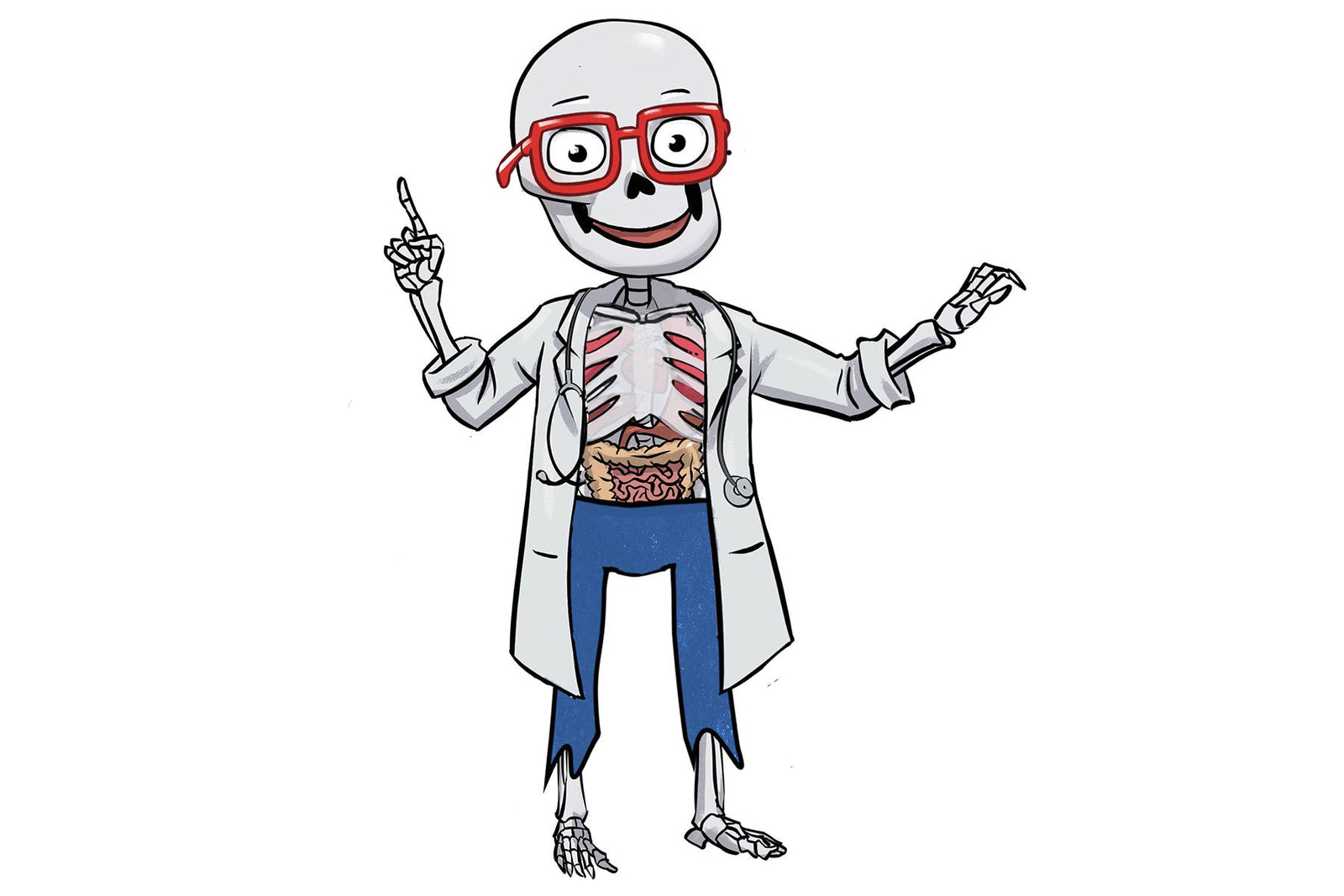
When it comes to anatomy, you’re nearly an expert on knowing yourself by now. But can you apply what you’ve learned to something a little less…human?
Zombies may be the most mysterious of the ghoulish creatures we encounter this time of year. Sure, they’re undead, but what does that really mean?
They seem to be able to walk—if awkwardly—so do some of their muscles still work? Sometimes you’ll see a zombie with oozing wounds or bruises—what does that tell us about their circulatory system or their immune system? Why do they want BRAAAIIINNS so badly?
We’d like you to think like a mad scientist and help us understand zombie anatomy. We need to collect as many field notes as possible on your observations about how zombies’ bodies might work compared to us fully living humans.
Use the worksheet below to record your observations about zombies—how they act, what they look like, how they respond to sights, sounds, smells—for each bodily system, and why you think they might have those characteristics. (Download your field guide here)
Example:
Observation: Zombies seem to have slow, labored breathing.
Potential Causes: Impaired lung function.
Be as specific as you can, and be sure to file your report back with us, so we can compare notes!
| Field Notes | Observations | Potential Causes |
|
Senses |
||
|
Skeletal System |
||
|
Circulatory System |
||
|
Renal System |
||
|
Digestive System |
||
|
Immune System |
||
|
Muscular System |
||
|
Endocrine System |
||
|
Respiratory System |
||
|
Lymphatic System |
||
|
Nervous System |
||
|
Integumentary System |
||
|
Other Observations |
Possible Answers (expand if you dare)
Important: there are no right answers to this exercise.
Here are some potential answers we came up with, just to see how they compare to your thoughts about zombie body systems.
| Field Notes | Observations | Potential Causes |
|
Senses |
Eyes are cloudy and eyesight doesn’t seem as good as non-zombies. Supernatural sense of smell. Taste in food is limited. |
Visual receptors haven’t been used while zombies were underground, so it’s possible their vision just stopped working. Smell may have developed more strongly due to lack of other strong senses, or maybe BRAAAIINS have a specific smell, so it’s the best way to seek them out? |
|
Skeletal System |
Hunched stature and awkward gait. |
I’d probably have a crick in my neck, back, and everywhere else if I had been buried underground for a while. It’s likely that there’s been some bone density loss—possibly from the lack of vitamin D-producing sunlight exposure. |
|
Circulatory System |
Zombies are sometimes shown as able to bleed, and have bloody wounds. Wounds don’t appear to heal. |
Wounds that don’t heal can be a sign of poor circulation. Muscles need oxygen to work, and zombies appear strong, though, so maybe their blood circulates differently? Or their muscles don’t use oxygen the same way ours do? |
|
Renal System |
I have not seen a zombie urinate |
It’s possible that zombies’ organs don’t filter blood, or that theydo filter blood but it doesn’t create urine. It’s also possible that zombies are very discreet about going to the bathroom. |
|
Digestive System |
Zombies have the ability to devour brains. |
It’s unclear how brains are processed by a zombie body. Since they constantly desire more, it’s possible a partially working digestive system is breaking down the food. If zombies don’t generate waste, it’s possible that every part of the brains they devour are used by their bodies. |
|
Immune System |
Pus is sometimes observed in zombie wounds. |
Pus indicates the presence of white blood cells. Is it possible zombies have a working immune system? |
|
Muscular System |
Walking is impaired, as observed in skeletal system. Appear to be strong when in pursuit of brains. |
Aside from labored movements, leg, arm, hand, and jaws are still strong, indicating muscles are still intact and working. |
|
Endocrine System |
Strong desire for brains at any cost. |
Whatever hormones still exist in a zombie, they seem to all be driving a desire for brains and nothing else. |
|
Respiratory System |
Breathing is labored and vocal cords produce raspy sounds. |
Possible impaired gas exchange or lung capacity. |
|
Lymphatic System |
Zombies are usually rather skinny, without edema. |
It’s unclear whether fluids are being filtered by lymph nodes, but lack of edemacould indicate a working lymphatic system. |
|
Nervous System |
Brain is still able to get messages to the rest of the zombie body to tell it to move in pursuit of brains. No impulse control—will put themselves in danger for brains. |
Fascinating—there must still be at least some working nerve impulse in order for the zombie to move. Little to no impulse control suggests impaired executive function in their own brains. |
|
Integumentary System |
Skin is pale or gray. |
Zombies may no longer produce melanin—or perhaps they’ve just been underground and have not been exposed to sunlight in too long. Lack of color could also be due to limited or no blood flow throughout their bodies. |









Leave a comment (all fields required)